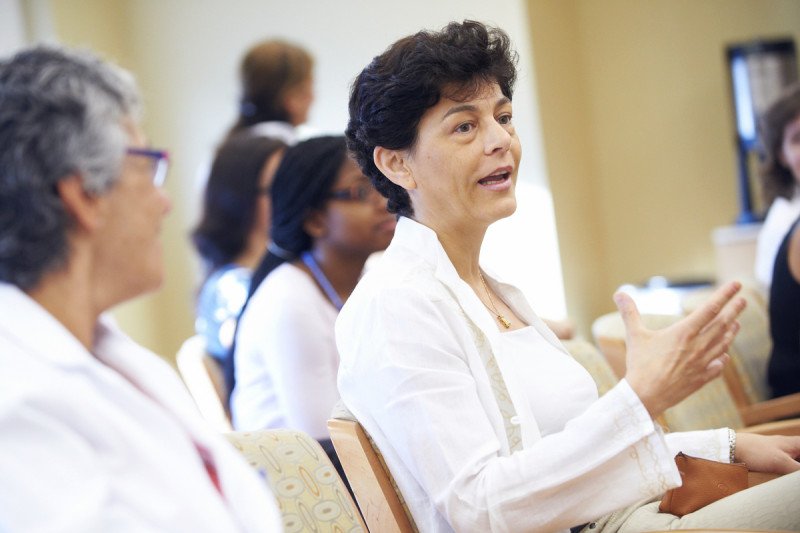
Pathologist Edi Brogi analyzes breast tissue from biopsies to help shape personalized treatment plans.
If a physical exam, a mammogram, or other imaging tests show a suspicious change in one of your breasts, the next step is likely to be a biopsy.
How is a Breast Biopsy Done?
During a breast biopsy, a tissue sample is taken from your breast. It’s then examined under a microscope by a pathologist — a doctor who specializes in diagnosing disease — who can determine whether it contains cancerous cells.
Types of Breast Biopsy Procedures
Breast biopsies are performed in different ways based on your situation.
Fine-Needle Aspiration (FNA)
During an FNA procedure, a doctor inserts a very thin needle into the area of the breast with suspicious changes and removes a few cells. FNA is relatively quick, and any discomfort lasts only a few seconds. A pathologist examines the fluids or cells under a microscope to determine if they are benign (normal) or malignant (cancerous).
FNA is rarely used as the primary way to diagnose breast cancer because it doesn’t allow us to reliably tell the difference between in situ cancers and invasive ones. We often use FNA to evaluate whether breast cancer has spread to the axillary lymph nodes (located in the armpits) or other organs. In such cases, we can also test the expression of breast cancer tumor markers such as ER, PR, and HER2 in the tumor cells present in an FNA sample, provided that enough cells are available.
Core Needle Biopsy
We use a core needle biopsy if we need a tissue sample that’s larger than what an FNA can get. We also use it if the tissue removed during an FNA doesn’t lead to a definitive diagnosis. Core needle biopsy requires the use of a local anesthetic to numb the area and a larger, hollow needle to remove a thin cylinder of tissue.
Core needle biopsy is the preferred method for sampling suspicious breast lesions. We routinely assess the expression of ER, PR, and HER2 in invasive carcinoma using core needle biopsy samples. The information obtained from a core needle biopsy informs the treatment plan your doctor recommends
Image-Guided Biopsy
Image-guided procedures use computer-imaging techniques to guide a needle into the breast to collect cells or tissue from a suspicious area. We use this method to diagnose suspicious areas that can be seen on a mammogram, ultrasound, or MRI but are too small to be felt by touch. Our breast imaging specialists have developed and shown the benefits of this approach. For most women, this type of breast biopsy can spare them a more uncomfortable and expensive surgical biopsy. It may also enable doctors to make a diagnosis more quickly so that women may start their treatment sooner.
A radiologist — a doctor whose specialty is using imaging tests to diagnose disease — performs this type of biopsy. He or she can pinpoint the exact location of the abnormal cells or tissue using x-ray, ultrasound, MRI, or other imaging techniques. Which technique is used depends on what the cells or tissue look like and what would create the best image of them.
Surgical Biopsy
A surgical biopsy is a brief procedure that takes place in an operating room but does not require you to stay in the hospital overnight. It does require you to be lightly sedated. The surgeon makes a small incision and removes either the entire mass of suspicious breast tissue or a representative sample, depending on its size and location.
We may recommend a surgical biopsy for two main reasons. The first is if other breast biopsy procedures don’t provide a clear diagnosis. The second is if the area containing possible cancer cells is too deep or too shallow for a fine needle aspiration or a core biopsy.


